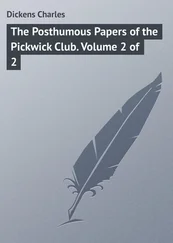Hubert Bancroft - The Native Races [of the Pacific states], Volume 5, Primitive History
Здесь есть возможность читать онлайн «Hubert Bancroft - The Native Races [of the Pacific states], Volume 5, Primitive History» — ознакомительный отрывок электронной книги совершенно бесплатно, а после прочтения отрывка купить полную версию. В некоторых случаях можно слушать аудио, скачать через торрент в формате fb2 и присутствует краткое содержание. Жанр: foreign_antique, foreign_prose, на английском языке. Описание произведения, (предисловие) а так же отзывы посетителей доступны на портале библиотеки ЛибКат.
- Название:The Native Races [of the Pacific states], Volume 5, Primitive History
- Автор:
- Жанр:
- Год:неизвестен
- ISBN:нет данных
- Рейтинг книги:5 / 5. Голосов: 1
-
Избранное:Добавить в избранное
- Отзывы:
-
Ваша оценка:
- 100
- 1
- 2
- 3
- 4
- 5
The Native Races [of the Pacific states], Volume 5, Primitive History: краткое содержание, описание и аннотация
Предлагаем к чтению аннотацию, описание, краткое содержание или предисловие (зависит от того, что написал сам автор книги «The Native Races [of the Pacific states], Volume 5, Primitive History»). Если вы не нашли необходимую информацию о книге — напишите в комментариях, мы постараемся отыскать её.
The Native Races [of the Pacific states], Volume 5, Primitive History — читать онлайн ознакомительный отрывок
Ниже представлен текст книги, разбитый по страницам. Система сохранения места последней прочитанной страницы, позволяет с удобством читать онлайн бесплатно книгу «The Native Races [of the Pacific states], Volume 5, Primitive History», без необходимости каждый раз заново искать на чём Вы остановились. Поставьте закладку, и сможете в любой момент перейти на страницу, на которой закончили чтение.
Интервал:
Закладка:
86
This will be best shown by referring to Warden's comparison of American, Chinese, and Tartar words. Recherches , pp. 125-6. The Haidahs, are said, however, to have used words known to the Chinese. Deans' Remains in B. Col. , MS. Mr Taylor writes: 'The Chinese accent can be traced throughout the Indian (Digger) language,' and illustrates his assertion with a comparative vocabulary of Indian and Chinese. Cal. Farmer , Sept. 12, 1862. The Chinese in California 'are known to be able to converse with them (the Indians) in their respective languages.'! Cronise's California , p. 31.
87
Warden, Recherches , pp. 127-9, gives a long list of these resemblances. See also Ampère , Prom. en Amér. , tom. ii., p. 301; Prescott's Mex. , vol. iii., p. 396; Faliés , Études Hist. sur les Civilisations , tom. i., pp. 380-1. Molina found (in Chili?) inscriptions resembling Chinese. M'Culloh's Researches on Amer. , pp. 171-2. Bossu found some similarity between the language of the Natchez of Louisiana, and the Chinese. Nouveaux Voyages aux Indes Occidentales , tom. i., let. xviii.; cited by Warden , Recherches , p. 121. The last mentioned author also quotes a long list of analogies between the written language of the Chinese and the gesture language of the northern Indians, from a letter written by Wm Dunbar to the Philosophical Society of Philadelphia, and comments thereon. Recherches , p. 176. Of the value of these philological proofs the reader may judge by the following fair sample: 'the Chinese call a slave, shungo; and the Naudowessie Indians, whose language from their little intercourse with the Europeans is the least corrupted, term a dog, shungush. The former denominate one species of their tea, shousong; the latter call their tobacco, shousassau.' Carver's Trav. , p. 214. The supposition of Asiatic derivation is assumed by Smith Barton on the strength of certain similarities of words, but Vater remarks, these prove only partial migrations. Malte-Brun , Précis de la Géog. , tom. vi., p. 290. 'On the whole, more analogies (etymol.) have been found with the idioms of Asia, than of any other quarter. But their amount is too inconsiderable to balance the opposite conclusion inferred by a total dissimilarity of structure.' Prescott's Mex. , vol. iii., p. 396. Barton, New Views , gives a comparative vocabulary to show that Asiatic traces have been discovered in the languages of South as well as North America. Latham, Man and His Migrations , p. 185, has proofs that 'the Kamskadale, the Koriak, the Aino-Japanese, and the Korean are the Asiatic languages most like those of America.' 'Dans quatre-vingt-trois langues américaines examinées par MM. Barton et Vater, on en a reconnu environ cent soixante-dix dont les racines semblent être les mêmes; et il est facile de se convaincre que cette analogie n'est pas accidentelle, qu'elle ne repose pas simplement sur l'harmonie imitative, ou sur cette égalité de conformation dans les organes, qui rend presque identiques les premiers sons articulés par les enfans. Sur cent soixante-dix mots qui ont des rapports entre eux, il y en a trois cinquièmes qui rappellent le mantchou, le tungouse, le mongol et le samojède, et deux cinquièmes qui rappellent les langues celtique et tschoude, le basque, le copte et le congo.' Humboldt , Vues , tom. i., pp. 27-8. Prichard, Nat. Hist. Man , vol. ii., pp. 512-13, thinks that the Otomí monosyllabic language may belong to Chinese and Indo-Chinese idioms; but Latham, Varieties of Man , p. 408, doubts its isolation from other American tongues, and thinks that it is either anaptotic or imperfectly agglutinate.
88
Nouveaux Voyages aux Indes Occidentales , tom. i., lettre xviii. Cited by Warden , Recherches , p. 121.
89
Trav. , p. 213.
90
Hist. of Louisiana , London 1774.
91
Speaking of the ruins of Central America, Stephens says: 'if their (the Chinese) ancient architecture is the same with their modern, it bears no resemblance whatever to these unknown ruins.' Cent. Amer. , vol. ii., p. 438.
92
Humboldt , Vues , tom. i., p. 236. Speaking of the Popol Vuh, Viollet-le-Duc says: 'Certains passages de ce livre ont avec les histoires héroïques de l'Inde une singulière analogie.' In Charnay , Ruines Amér. , p. 40. See also, Brasseur de Bourbourg , Quatre Lettres , pp. 212-13, 236-42.
93
Geschichte der Religion Jesu Christi , tom. i., p. 426. Quoted in Humboldt , Vues , tom. i., p. 256.
94
Vues , tom. i., p. 257. Tschudi, again, writes: 'As among the East Indians, an undefined being, Bramah, the divinity in general, was shadowed forth in the Trimurti, or as a God under three forms, viz., Bramah , Vishnu , and Sciva ; so also the Supreme Being was venerated among the Indians of Mexico, under the three forms of Ho , Huitzilopoctli , and Tlaloc , who formed the Mexican Trimurti. The attributes and worship of the Mexican goddess Mictanihuatl preserve the most perfect analogy with those of the sanguinary and implacable Kali; as do equally the legends of the Mexican divinity Teayamiqui with the formidable Bhavani; both these Indian deities were wives of Siva-Rudra. Not less surprising is the characteristic likeness which exists between the pagodas of India and the Teocallis of Mexico, while the idols of both temples offer a similitude in physiognomy and posture which cannot escape the observation of any one who has been in both countries. The same analogy is observed between the oriental Trimurti and that of Peru; thus Con corresponds to Bramah, Pachacamac to Vishnu, and Huiracocha to Siva. The Peruvians never dared to erect a temple to their ineffable God, whom they never confounded with other divinities; a remarkable circumstance, which reminds us of similar conduct among a part of the inhabitants of India as to Bramah, who is the Eternal, the abstract God. Equally will the study of worship in the two hemispheres show intimate connection between the existence and attributes of the devadasis (female servants of the Gods) and the Peruvian virgins of the Sun.
All these considerations, and many others, which from want of space we must omit, evidently prove that the greater part of the Asiatic religions, such as that of Fo , in China, of Buddha , in Japan, of Sommono-Cadom , in India, the Lamaism of Thibet, the doctrine of Dschakdschiamuni among the Mongols and Calmucs; as well as the worship of Quetzalcoatl , in Mexico, and of Manco-Capac , in Peru, are but so many branches of the same trunk; whose root the labors of archæology and modern philosophy have not been able to determine with certainty, notwithstanding all the discussion, perseverance, sagacity, and boldness of hypothesis, among the learned men who have been occupied in investigating the subject.' After remarking upon the marvelous analogy between Christianity and Buddhism as found to exist by the first missionaries to Thibet, he goes on: 'Not less, however, was the surprise of the first Spanish ecclesiastics, who found, on reaching Mexico, a priesthood as regularly organized as that of the most civilized countries. Clothed with a powerful and effective authority which extended its arms to man in every condition and in all the stages of his life, the Mexican priests were mediators between man and the Divinity; they brought the newly born infants into the religious society, they directed their training and education, they determined the entrance of the young men into the service of the State, they consecrated marriage by their blessing, they comforted the sick and assisted the dying.' Finally, Tschudi finds it necessary to 'insist on this point, that Quetzalcoatl and Mango Capac were both missionaries of the worship of Bramah or Buddha, and probably of different sects.' Peruvian Antiq. , pp. 17-20. Domenech, Deserts , vol. i., p. 52, has this passage, nearly word for word the same as Tschudi, but does not mention the latter author's name. There is 'a remarkable resemblance between the religion of the Aztecs and the Buddhism of the Chinese.' Gentleman's Magazine ; quoted in Washington Standard , Oct. 30, 1869. In Quetzalcoatl may be recognized one of the austere hermits of the Ganges, and the custom of lacerating the body, practiced by so many tribes, has its counterpart among the Hindoos. Priest's Amer. Antiq. , p. 211. Quetzalcoatl, like Buddha, preached against human sacrifice. Humboldt , Vues , tom. i., p. 265.
Читать дальшеИнтервал:
Закладка:
Похожие книги на «The Native Races [of the Pacific states], Volume 5, Primitive History»
Представляем Вашему вниманию похожие книги на «The Native Races [of the Pacific states], Volume 5, Primitive History» списком для выбора. Мы отобрали схожую по названию и смыслу литературу в надежде предоставить читателям больше вариантов отыскать новые, интересные, ещё непрочитанные произведения.
Обсуждение, отзывы о книге «The Native Races [of the Pacific states], Volume 5, Primitive History» и просто собственные мнения читателей. Оставьте ваши комментарии, напишите, что Вы думаете о произведении, его смысле или главных героях. Укажите что конкретно понравилось, а что нет, и почему Вы так считаете.
![Hubert Bancroft The Native Races [of the Pacific states], Volume 5, Primitive History обложка книги](/books/749157/hubert-bancroft-the-native-races-of-the-pacific-s-cover.webp)
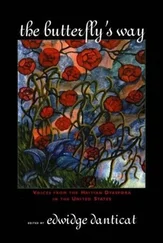
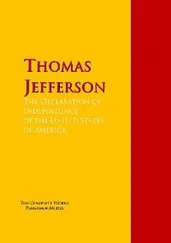
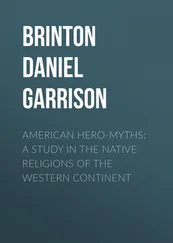

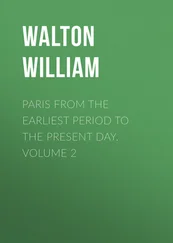


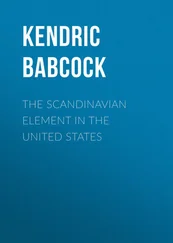

![Hubert Bancroft - The Native Races [of the Pacific states], Volume 1, Wild Tribes](/books/750126/hubert-bancroft-the-native-races-of-the-pacific-s-thumb.webp)
